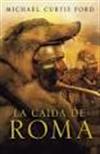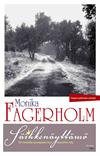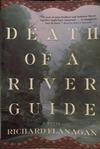Change your Language
Make a Journal Entry

The Three Jacobean Witchcraft Plays: Sophonisba; The Witch; The Witch of Edmonton (Revels Plays)
by Thomas Dekker, John Ford, William Rowley | category Plays & ScriptsRegistered by LittleBigDave of Selby, North Yorkshire United Kingdom on 10/26/2008
2 journalers
You're currently not logged in to BookCrossing.com. If you continue now your Journal Entry will be shown under the name of "Anonymous Finder". If you want to later track your book (and optionally receive an email when someone else makes a
Journal Entry for this book) you need to log in first. If you don't have a BookCrossing account yet,
you can sign up right away. It's a matter of seconds and you can write your Journal Entry immediately afterwards.
What do you want to do?
What do you want to do?
2 journalers for this copy...
Journal Entry 1 by LittleBigDave from Selby, North Yorkshire United Kingdom on Sunday, October 26, 2008
Renaissance writing is culturally anxious about female power in the same way as it is culturally anxious about the supernatural. Women and witches are equally feared and feared for the same reasons. How far do you agree with this statement?
This essay will use various Renaissance texts and secondary sources to examine how those cultural anxieties regarding women and witchcraft manifested themselves and will explore the similarities and differences between the supposed threats of both women and witchcraft.
Renaissance writing shows us that there was a profound cultural anxiety regarding female power and supernatural elements within Renaissance society. The basis for this anxiety was a prevailing belief that both women and witches were inherently dangerous; women, still tainted by Eve’s original sin were feared because their supposed weak nature meant they were not to be trusted, and because of their sexual allure which was apt to lead men astray and away from the path of righteousness. Witches were feared because their supposed magical powers coupled with their malign intent made them the antithesis of everything a virtuous woman should be. Consequently women and witches were seen to be a threat to the mortal soul and to the fabric of society as whole. The fears harbored by Renaissance society were typical and symptomatic of a patriarchal belief system which felt that women were a threat to their reign and to the natural social order of the time.
In order to subdue female power Renaissance women were not allowed to partake of academic pursuits or become knowledgeable in many areas of learning, an exception to this was in the church, though Alison Findlay says,
For a woman to write as a learned authority on scripture would have been to repeat Eve’s earlier folly, to presume beyond her station, to aspire to the god-like position of father or husband; in short, to enter the province of men. (Findlay; 1999: 12)
This shows us that even within the spheres that they were allowed to be part of, in comparison to men women were not permitted to assert themselves to any significant degree and must always be seen as inferior to their male counterparts.
Similarly subjugated were practitioners of witchcraft. Though witchcraft itself was not outlawed, restrictions were placed upon its practice whereby using witchcraft to kill was punishable by death and using witchcraft to harm humans, cattle, property or to steal was punishable by prison and the pillory. This similarity shows us that the cultural anxiety surrounding both women and witches stemmed from the same source, also that each were allowed to exist providing they ‘knew their place’ and adhered to certain protocols that exempt them from ever successfully revolting and usurping the patriarchal system in place at the time.
Because the fear of women and the fear of witches were so closely intertwined the accusation of being a witch was able to be leveled at any woman who may be perceived as a threat or who stands out as different. Barabara Rosen says,
The English witch is almost invariably a woman, usually poor, though there are some exceptions, and usually elderly. In most cases she has a bad reputation from the beginning- often for unchastity or malice (Rosen; 1969: 29)
This description shows us how easy it was for lower class women, especially widowed women who were living independently of males and who were considered undesirable to be cast into the role of witch and suffer persecution at the hands of the authorities and local community. In this sense the cultural anxiety surrounding witches was merely an extension of society’s fear of women and female power.
Thomas Middleton’s The Witch shows us how these cultural anxieties were fuelled through the literature of the time. Hecate, the main witch figure in Middleton’s play is approached by Sebastian and asked to make a potion which will render another man impotent, thereby giving Sebastian the opportunity to steal the man’s wife whom he thinks rightfully ‘belongs’ to himself. Sebastian’s aligns himself with Hecate saying,
Heaven knows with what unwillingness and hate I enter this damned place; but such extremes of wrongs in love fight ‘gainst religious knowledge. (Middleton; 1986: 94)
His words show us that he is at his lowest ebb, and that it is only through sheer desperation that he allows himself to be a party to Hecate’s harmful witchcraft. The Renaissance reader would be aware that these feelings and emotions stem from being in love with a woman, which in turn causes a man to become weak of resolve and commit acts that allow witches to offer their illicit services. Also, the Renaissance fear of patriarchy being usurped by female power is exemplified here in the act of a female witch being able to cause impotency in a male; thereby emasculating him and making him unable to perform his ‘duties’ as a husband. Here, although Sebastian is the instigator of the witchcraft, women (Isabella) and witches (Hecate) are portrayed as the catalyst and the culprit respectively. The witch’s dangerous sexuality which mirrors the Renaissance fear of promiscuous and even merely sexual assertive women is also apparent in the depiction of Hecate’s wanton lustfulness, captured in the dialogue between Hecate and Firestone,
Firestone: Not I, forsooth.
[Aside] Truly the devil's in her, I think. How one villain smells out another straight! There's no knavery but is nosed like a dog, and can smell out a dog's meaning. [To Hecate] Mother, I pray give me leave to ramble abroad tonight with the Nightmare, for I have a great mind to overlay a fat parson's daughter.
Hecate: And who shall lie with me then?
Firestone: The great cat.
For one night, mother. 'Tis but a night-
Make shift with him for once.
Hecate:
You're a kind son!
But 'tis the nature of you all, I see that.
You had rather hunt after strange women still
Than lie with your own mothers. (Middleton; 1986: 94)
Here Middleton is exploiting the mistrust of sexualised females and creating a link between them and witches, a message to the Renaissance audience that overt sexuality is sinful and a thing to be avoided.
Another piece of Renaissance writing that again casts the witch as a purely evil and hostile figure is Henry Goodcole’s pamphlet The wonderful discoverie of Elizabeth Sawyer, Witch. Published in 1621 this pamphlet fanned the flames of hatred against witches and perpetuated the cycle of mistrust against them by adhering to a preconceived archetype when describing the witch and highlighting her most undesirable qualities. Henry Goodcole’s pious pamphlet served as a piece of moral propaganda and the witch was held as an example of what can befall those who allow themselves to become bitter and resentful of their (usually more affluent) neighbours.
Goodcole’s pamphlet was not taken at face value by all of Renaissance society and some saw the condemnation of Elizabeth Sawyer (and presumably other so called witches) as unjust and a result of a hypocritical and morally unsound society. William Rowley, Thomas Dekker and John Ford used this to write the Play The Witch of Edmonton. Where Goodcole's witch is inherently evil and motivated purely by spite, Elizabeth Sawyer in the play is cast as a victim of circumstance who is driven to perform witchcraft through desperation after being ostracized by her peers. David Atkinson says of Elizabeth Sawyer,
This lonely figure is shunned, abused and taken for a witch by the community of Edmonton because she is old and deformed and steals a few sticks from time to time… but most of all because their own ill-treatment of her has bred in her a bad temper and a sharp tongue… Mother Sawyer neither is a witch not possesses the knowledge of good and evil that is implicit in the notion of witchcraft… Indeed it is difficult to blame her for cursing her tormentor, Old Banks, who shortly beforehand has driven off his land with blows. (Atkinson; 1985)
Here The Witch of Edmonton shows us that accusations of witchcraft were used as a malicious social force directed against women for the slightest of provocations and the ensuing fear of the witch in the community was a direct consequence of a woman being outcasted from her society, initially for reason not necessarily connected to witchcraft, and that the label of witch came after that. Ergo, the fear of women and the fear of witches are, if not the same, inextricably linked.
A further Renaissance play that encapsulates the mistrust and cultural anxiety of both women and witches, and which also shows the dangers each poses as being similar in kind is William Shakespeare’s Macbeth. The play highlights the dangers of allowing female influence to cloud one’s judgment in male affairs and shows how ambitious, power hungry women can cause much calamity for themselves and their husbands.
Macbeth, like Sebastian in The Witch perpetrates acts of betrayal, deception and evil, but he is not cast as entirely the villain, instead it is the women and the witches of the play that are seen to be the instigators of his fall from righteousness.
At the plays inception the audience is immediately presented with a coven of witches. Their behaviour and their incantation "fair is foul, and foul is fair" (Shakespeare; 1992: 25) shows the audience the willingness of the witches to perform deceitful acts for their own ends. The idea of women having the power to send men to their doom is given added emphasis in Macbeth by the duel roles of the witches and Lady Macbeth. All have a degree of power and agency and they use this to influence Macbeth’s actions and bring about his downfall. It is Lady Macbeth’s thirst for power and the power she has over her husband that lead him to kill Duncan.
Throughout the play Macbeth is depicted not as a villain and an evil man, but as a brave and good man. It is only the interference of the women in the play that sway him to commit his later atrocities, and the onus of responsibility lays with them.
In conclusion it would seem from the reading of these three Renaissance plays that women and witches were feared the same reason in the sense that witches were feared because they were women who wielded power; maybe not power in a political or economic sense, but a power that lay in their ability to bring about change and do harm in the world of men. It seems that to label someone a witch was an effective way of removing any power they may have previously had by removing their ability to exist in harmony with those around them. This is especially true in the cases of single, unmarried or widowed women who would have been seen as the biggest threat by virtue of them not being affiliated with any man; essentially independent, free women. The fear of witches was, essentially, the fear of independent and non-domesticated women.
Bibliography:
Primary Sources:
Corbin, C & Sedge, D (1986), Three Jacobean witchcraft plays: Sophonista, The Witch, The The Witch of Edmonton, Manchester University Press
Shakespeare, W (1992), Macbeth, Wordsworth Classics: Hertfordshire
Secondary Sources:
Findlay, A. (1999), A Feminist Perspective on Renaissance Drama, Blackwell Publishers: Oxford
Rosen, B (1969), Witchcraft in England 1558 – 1618, The University of Massachusetts Press
Internet Sources:
David Atkinson (1985), ‘Moral Knowledge and the Double Action in The Witch of Edmonton’ in Studies in English Literature, 1500-1900, Vol. 25, No. 2,
Elizabethan and Jacobean Drama. (Spring, 1985), pp. 419-437.
URL:http://links.jstor.org/sici?sici=00393657%28198521%2925%3A2%3C419%3AMKATDA%3E2.0.CO%3B2-P
(accessed: 15th March 2008).
This essay will use various Renaissance texts and secondary sources to examine how those cultural anxieties regarding women and witchcraft manifested themselves and will explore the similarities and differences between the supposed threats of both women and witchcraft.
Renaissance writing shows us that there was a profound cultural anxiety regarding female power and supernatural elements within Renaissance society. The basis for this anxiety was a prevailing belief that both women and witches were inherently dangerous; women, still tainted by Eve’s original sin were feared because their supposed weak nature meant they were not to be trusted, and because of their sexual allure which was apt to lead men astray and away from the path of righteousness. Witches were feared because their supposed magical powers coupled with their malign intent made them the antithesis of everything a virtuous woman should be. Consequently women and witches were seen to be a threat to the mortal soul and to the fabric of society as whole. The fears harbored by Renaissance society were typical and symptomatic of a patriarchal belief system which felt that women were a threat to their reign and to the natural social order of the time.
In order to subdue female power Renaissance women were not allowed to partake of academic pursuits or become knowledgeable in many areas of learning, an exception to this was in the church, though Alison Findlay says,
For a woman to write as a learned authority on scripture would have been to repeat Eve’s earlier folly, to presume beyond her station, to aspire to the god-like position of father or husband; in short, to enter the province of men. (Findlay; 1999: 12)
This shows us that even within the spheres that they were allowed to be part of, in comparison to men women were not permitted to assert themselves to any significant degree and must always be seen as inferior to their male counterparts.
Similarly subjugated were practitioners of witchcraft. Though witchcraft itself was not outlawed, restrictions were placed upon its practice whereby using witchcraft to kill was punishable by death and using witchcraft to harm humans, cattle, property or to steal was punishable by prison and the pillory. This similarity shows us that the cultural anxiety surrounding both women and witches stemmed from the same source, also that each were allowed to exist providing they ‘knew their place’ and adhered to certain protocols that exempt them from ever successfully revolting and usurping the patriarchal system in place at the time.
Because the fear of women and the fear of witches were so closely intertwined the accusation of being a witch was able to be leveled at any woman who may be perceived as a threat or who stands out as different. Barabara Rosen says,
The English witch is almost invariably a woman, usually poor, though there are some exceptions, and usually elderly. In most cases she has a bad reputation from the beginning- often for unchastity or malice (Rosen; 1969: 29)
This description shows us how easy it was for lower class women, especially widowed women who were living independently of males and who were considered undesirable to be cast into the role of witch and suffer persecution at the hands of the authorities and local community. In this sense the cultural anxiety surrounding witches was merely an extension of society’s fear of women and female power.
Thomas Middleton’s The Witch shows us how these cultural anxieties were fuelled through the literature of the time. Hecate, the main witch figure in Middleton’s play is approached by Sebastian and asked to make a potion which will render another man impotent, thereby giving Sebastian the opportunity to steal the man’s wife whom he thinks rightfully ‘belongs’ to himself. Sebastian’s aligns himself with Hecate saying,
Heaven knows with what unwillingness and hate I enter this damned place; but such extremes of wrongs in love fight ‘gainst religious knowledge. (Middleton; 1986: 94)
His words show us that he is at his lowest ebb, and that it is only through sheer desperation that he allows himself to be a party to Hecate’s harmful witchcraft. The Renaissance reader would be aware that these feelings and emotions stem from being in love with a woman, which in turn causes a man to become weak of resolve and commit acts that allow witches to offer their illicit services. Also, the Renaissance fear of patriarchy being usurped by female power is exemplified here in the act of a female witch being able to cause impotency in a male; thereby emasculating him and making him unable to perform his ‘duties’ as a husband. Here, although Sebastian is the instigator of the witchcraft, women (Isabella) and witches (Hecate) are portrayed as the catalyst and the culprit respectively. The witch’s dangerous sexuality which mirrors the Renaissance fear of promiscuous and even merely sexual assertive women is also apparent in the depiction of Hecate’s wanton lustfulness, captured in the dialogue between Hecate and Firestone,
Firestone: Not I, forsooth.
[Aside] Truly the devil's in her, I think. How one villain smells out another straight! There's no knavery but is nosed like a dog, and can smell out a dog's meaning. [To Hecate] Mother, I pray give me leave to ramble abroad tonight with the Nightmare, for I have a great mind to overlay a fat parson's daughter.
Hecate: And who shall lie with me then?
Firestone: The great cat.
For one night, mother. 'Tis but a night-
Make shift with him for once.
Hecate:
You're a kind son!
But 'tis the nature of you all, I see that.
You had rather hunt after strange women still
Than lie with your own mothers. (Middleton; 1986: 94)
Here Middleton is exploiting the mistrust of sexualised females and creating a link between them and witches, a message to the Renaissance audience that overt sexuality is sinful and a thing to be avoided.
Another piece of Renaissance writing that again casts the witch as a purely evil and hostile figure is Henry Goodcole’s pamphlet The wonderful discoverie of Elizabeth Sawyer, Witch. Published in 1621 this pamphlet fanned the flames of hatred against witches and perpetuated the cycle of mistrust against them by adhering to a preconceived archetype when describing the witch and highlighting her most undesirable qualities. Henry Goodcole’s pious pamphlet served as a piece of moral propaganda and the witch was held as an example of what can befall those who allow themselves to become bitter and resentful of their (usually more affluent) neighbours.
Goodcole’s pamphlet was not taken at face value by all of Renaissance society and some saw the condemnation of Elizabeth Sawyer (and presumably other so called witches) as unjust and a result of a hypocritical and morally unsound society. William Rowley, Thomas Dekker and John Ford used this to write the Play The Witch of Edmonton. Where Goodcole's witch is inherently evil and motivated purely by spite, Elizabeth Sawyer in the play is cast as a victim of circumstance who is driven to perform witchcraft through desperation after being ostracized by her peers. David Atkinson says of Elizabeth Sawyer,
This lonely figure is shunned, abused and taken for a witch by the community of Edmonton because she is old and deformed and steals a few sticks from time to time… but most of all because their own ill-treatment of her has bred in her a bad temper and a sharp tongue… Mother Sawyer neither is a witch not possesses the knowledge of good and evil that is implicit in the notion of witchcraft… Indeed it is difficult to blame her for cursing her tormentor, Old Banks, who shortly beforehand has driven off his land with blows. (Atkinson; 1985)
Here The Witch of Edmonton shows us that accusations of witchcraft were used as a malicious social force directed against women for the slightest of provocations and the ensuing fear of the witch in the community was a direct consequence of a woman being outcasted from her society, initially for reason not necessarily connected to witchcraft, and that the label of witch came after that. Ergo, the fear of women and the fear of witches are, if not the same, inextricably linked.
A further Renaissance play that encapsulates the mistrust and cultural anxiety of both women and witches, and which also shows the dangers each poses as being similar in kind is William Shakespeare’s Macbeth. The play highlights the dangers of allowing female influence to cloud one’s judgment in male affairs and shows how ambitious, power hungry women can cause much calamity for themselves and their husbands.
Macbeth, like Sebastian in The Witch perpetrates acts of betrayal, deception and evil, but he is not cast as entirely the villain, instead it is the women and the witches of the play that are seen to be the instigators of his fall from righteousness.
At the plays inception the audience is immediately presented with a coven of witches. Their behaviour and their incantation "fair is foul, and foul is fair" (Shakespeare; 1992: 25) shows the audience the willingness of the witches to perform deceitful acts for their own ends. The idea of women having the power to send men to their doom is given added emphasis in Macbeth by the duel roles of the witches and Lady Macbeth. All have a degree of power and agency and they use this to influence Macbeth’s actions and bring about his downfall. It is Lady Macbeth’s thirst for power and the power she has over her husband that lead him to kill Duncan.
Throughout the play Macbeth is depicted not as a villain and an evil man, but as a brave and good man. It is only the interference of the women in the play that sway him to commit his later atrocities, and the onus of responsibility lays with them.
In conclusion it would seem from the reading of these three Renaissance plays that women and witches were feared the same reason in the sense that witches were feared because they were women who wielded power; maybe not power in a political or economic sense, but a power that lay in their ability to bring about change and do harm in the world of men. It seems that to label someone a witch was an effective way of removing any power they may have previously had by removing their ability to exist in harmony with those around them. This is especially true in the cases of single, unmarried or widowed women who would have been seen as the biggest threat by virtue of them not being affiliated with any man; essentially independent, free women. The fear of witches was, essentially, the fear of independent and non-domesticated women.
Bibliography:
Primary Sources:
Corbin, C & Sedge, D (1986), Three Jacobean witchcraft plays: Sophonista, The Witch, The The Witch of Edmonton, Manchester University Press
Shakespeare, W (1992), Macbeth, Wordsworth Classics: Hertfordshire
Secondary Sources:
Findlay, A. (1999), A Feminist Perspective on Renaissance Drama, Blackwell Publishers: Oxford
Rosen, B (1969), Witchcraft in England 1558 – 1618, The University of Massachusetts Press
Internet Sources:
David Atkinson (1985), ‘Moral Knowledge and the Double Action in The Witch of Edmonton’ in Studies in English Literature, 1500-1900, Vol. 25, No. 2,
Elizabethan and Jacobean Drama. (Spring, 1985), pp. 419-437.
URL:http://links.jstor.org/sici?sici=00393657%28198521%2925%3A2%3C419%3AMKATDA%3E2.0.CO%3B2-P
(accessed: 15th March 2008).
Journal Entry 2 by LittleBigDave at The Playhouse Theatre in Liverpool, Merseyside United Kingdom on Wednesday, December 3, 2008
Released 15 yrs ago (12/3/2008 UTC) at The Playhouse Theatre in Liverpool, Merseyside United Kingdom
WILD RELEASE NOTES:
WILD RELEASE NOTES:
I left it, quite appropriately, in the entrance to the Liverpool Playhouse. Maybe a thespian or theatre lover will find it and enjoy it.
I left it, quite appropriately, in the entrance to the Liverpool Playhouse. Maybe a thespian or theatre lover will find it and enjoy it.
Journal Entry 3 by TheOctogenarian from Liverpool, Merseyside United Kingdom on Sunday, December 7, 2008
Found this book outside the Playhouse, it intrigued me so I picked it up. I am also a member of bookcrossing already and the label caught my eye. I intend to read it and will post a review on my literary blog http://theliteraryoctogon.blogspot.com, and also here, when I am finished. Then I will release it again somewhere else...
Journal Entry 4 by TheOctogenarian from Liverpool, Merseyside United Kingdom on Monday, February 9, 2009
Although not light bedtime reading, this is an excellent collection of plays from the 1600's giving an alternative to those that are more widely known (like Shakespeare), and also for those interested in the period. It is especially valuable to those wanting to know more about the status of women during the period who were outcast as witches. The three plays cover different aspects of beliefs in witches, as a real threat to society, and also how they were used as scapegoats, someone to blame easily when things go wrong. I have also reviewed this book on my blog http://theliteraryoctogon.blogspot.com
I have released the book in the Everyman bistro on Hope Street, today at 1.20pm
I have released the book in the Everyman bistro on Hope Street, today at 1.20pm







